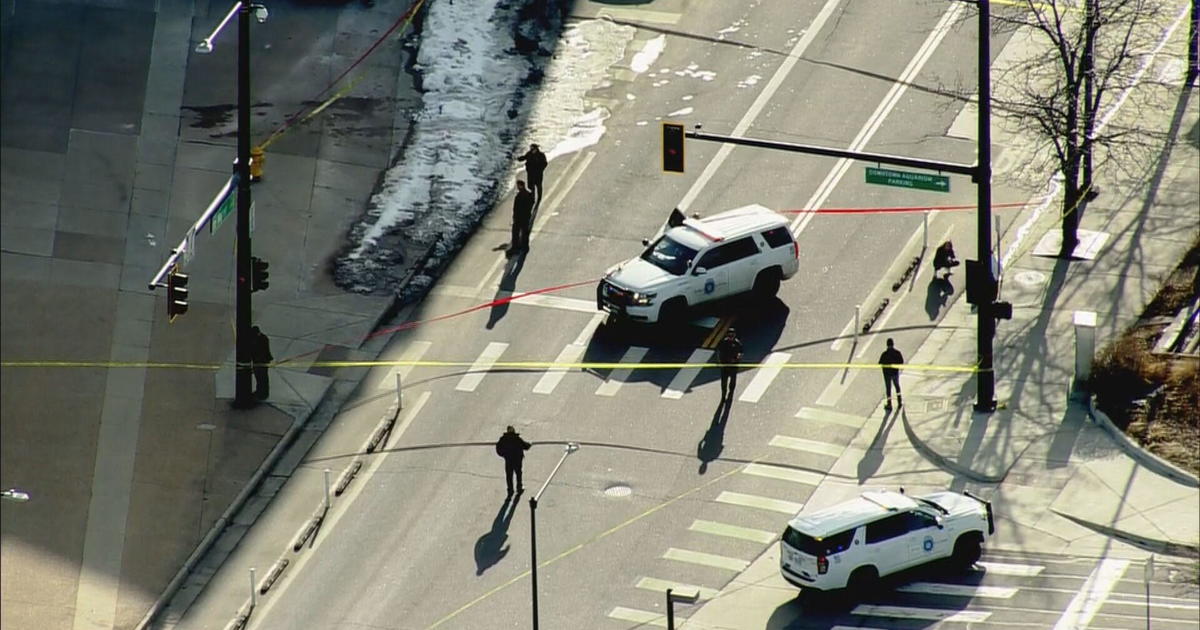Longmont Residents Suffer From Train Horn Rules
LONGMONT, Colo. (AP) - When the weather gets warm in Longmont, the windows open. The yard work starts. And the train horn complaints begin to pile up all over again.
It's not a new complaint. Since 2005, when the Federal Railroad Administration said that trains at crossings had to give a longer, louder warning of their presence, the neighbors have said it's just too noisy. And there can be a lot of neighbors; Longmont alone has 17 railroad crossings.
"There's a train that comes through at 5 in the morning and, really and truly, it does wake you up," said Mary Thurston Wise. Her home sits just off Atwood Street, where the tracks run down the center of the road, creating five crossings in five blocks.
"When you're outside, you have to go inside. I run in, calling, 'Close the screens! Close the doors!'"
The FRA wanted to reduce crossing accidents. And according to the statistics, it's worked.
In the eight years before the 2005 rule, Boulder County averaged 2.25 railroad crossing accidents a year. In the eight years since, it's averaged 0.375, including none at all in the last four years. (A 2011 incident, in which a teen trying to hop a ride had her legs amputated, was listed as a "trespasser accident" rather than a crossing collision.)
Still, plenty of people have wondered if there can't be a better way.
This year, senators Mark Udall and Michael Bennet and congressmen Cory Gardner and Jared Polis have been trying to find some way to keep the safety without blasting eardrums.
"I'm totally a safety-minded person," Wise agreed. "So if there's a good answer for safety and preventing noise pollution, I'm for it. It would be nice if there could be a happy medium."
Ask FRA officials and they'll tell you there is a solution in place: quiet zones.
Under the 2005 rule, if a city takes certain steps - such as a barrier median or a long crossing arm so cars can't swerve onto the tracks - then the crossing can be marked as a "quiet zone" where horns will be blasted only in an emergency.
But quiet zones aren't cheap. Longmont recently estimated that to set up quiet zones at a dozen crossings in town would run nearly $7 million. (The other five were supposed to have been taken care of under the Regional Transportation District's long-delayed FasTracks project.)
That's a lot of money, engineering services manager Nick Wolfrum said, especially when crossing accidents were rare in Longmont even before 2005.
"You have not seen a community in Colorado that's gone on ahead and wholesale created quiet zones," Wolfrum said. "It's more of an isolated, 'I'm doing this project anyway, so if I extend the median a little, I can make it a quiet zone.'"
And in certain areas, one quiet zone doesn't do anything. Coming back to Atwood, if the city closed one crossing or lengthened one barrier arm there, four others nearby still need a horn sounded - money spent for no real gain.
"Since we never got to the point of funding anything, the City Council never said, 'This is our number one priority," Wolfrum said.
Enter Washington. In January, Bennet and Udall sent a letter to the FRA emphasizing that train horns did more than annoy neighbors, they stifled economic development.
"As you may expect, train horn noise impacts almost everyone in communities where the railroad runs right through the center of town and where the business and residential area is spread over a relatively small area," read the letter, which asked the FRA to re-open the issue. "These impacts are amplified in downtown areas, which are focusing on redevelopment and urban renewal, as well as creating healthy, walkable neighborhoods."
The FRA noted in return that 525 quiet zones had been created nationwide, including 10 new ones in Colorado.
The agency would review its rules, FRA administrator Joseph Szabo wrote, but added that even if the standards can sometimes be difficult, safety has to come first.
That's where Gardner and Polis came in. In April, the two asked a congressional subcommittee - specifically, the Subcommittee on Railroads, Pipelines and Hazardous Materials - to hold hearings on the matter. The hearings have not yet been scheduled, Gardner said Friday, but will likely be added to an existing hearing later this year.
The goal, Gardner said, is flexibility.
"This is a federal regulatory agency. This is something I feel we can deal with," he said. "What I want to bring up is 'Do you really need to blow the horn that loud, that long?"
For the record, "that long" is currently 15 to 20 seconds, while "that loud" is 96 to 110 decibels - around the level of a chain saw or a rock concert.
SCOTT ROCHAT, Longmont Times-Call
(© Copyright 2013 The Associated Press. All Rights Reserved. This material may not be published, broadcast, rewritten or redistributed.)



